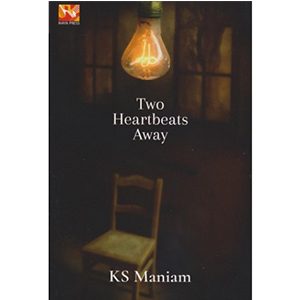Wartime Kitchen: Food and Eating in Singapore, 1942-1950
Wartime Kitchen: Food And Eating In Singapore (1942-1950)examines the experience of people during the period following the fall of Singapore in 1942 up to 1950. The author presents an in-depth yet lively research comprising anecdotes, personal reminiscences on food and eating and a collection of recipes in wartime Singapore. How did people cope with the food regime of rationed goods, bureaucracy and unpredictable supply? How did they sustain themselves by exploiting opportunities in varied and imaginative ways? Atmospheric and nostalgic in retrospect, it examines how hunger and the need for food became an impetus for creativity.
With references made also from the Oral History Department of the National Archives of Singapore under the Japanese Occupation Project, this book is a miscellany of memories, valued for how they reveal the textures of everyday life, lend an immediacy and vividness to events and flesh out the details embedded in archived records. It focuses on the memories of the local population rather than that of officers and men of the British and Australian military forces and the European civilian internees.
In reconstructing a history of food and eating in wartime Singapore, the book has taken from personal accounts including Chin Kee Onn’s Malaya Upside Down (1947); one of the earliest and most detailed first-hand accounts of life under the Japanese occupation; as well as comprehensive studies that have drawn from both personal memoirs and archival records, statistics and newspapers.
RM85.00
Out of stock
Description
Wartime Kitchen: Food And Eating In Singapore (1942-1950)examines the experience of people during the period following the fall of Singapore in 1942 up to 1950. The author presents an in-depth yet lively research comprising anecdotes, personal reminiscences on food and eating and a collection of recipes in wartime Singapore. How did people cope with the food regime of rationed goods, bureaucracy and unpredictable supply? How did they sustain themselves by exploiting opportunities in varied and imaginative ways? Atmospheric and nostalgic in retrospect, it examines how hunger and the need for food became an impetus for creativity.
With references made also from the Oral History Department of the National Archives of Singapore under the Japanese Occupation Project, this book is a miscellany of memories, valued for how they reveal the textures of everyday life, lend an immediacy and vividness to events and flesh out the details embedded in archived records. It focuses on the memories of the local population rather than that of officers and men of the British and Australian military forces and the European civilian internees.
In reconstructing a history of food and eating in wartime Singapore, the book has taken from personal accounts including Chin Kee Onn’s Malaya Upside Down (1947); one of the earliest and most detailed first-hand accounts of life under the Japanese occupation; as well as comprehensive studies that have drawn from both personal memoirs and archival records, statistics and newspapers.
Publisher: Editions Didier Millet
Hardback
2009
ISBN: 9789814217583

 Tao Te Ching
Tao Te Ching
 Child of All Nations
Child of All Nations
 Footsteps
Footsteps
 This Earth of Mankind
This Earth of Mankind
 Twenty Love Poems and a Song of Despair
Twenty Love Poems and a Song of Despair
 Two Heartbeats Away
Two Heartbeats Away
 Dancing on Thin Ice
Dancing on Thin Ice
 Yang Terbangsatkan: 1995 - 2016
Yang Terbangsatkan: 1995 - 2016
 Pembentukan Jiwa
Pembentukan Jiwa
 Senyumlah 3
Senyumlah 3
 The Chulia in Penang: Patronage and Place-Making around the Kapitan Kling Mosque, 1786–1957
The Chulia in Penang: Patronage and Place-Making around the Kapitan Kling Mosque, 1786–1957
 Selected Poems
Selected Poems
 China: From Mao to Modernity
China: From Mao to Modernity





